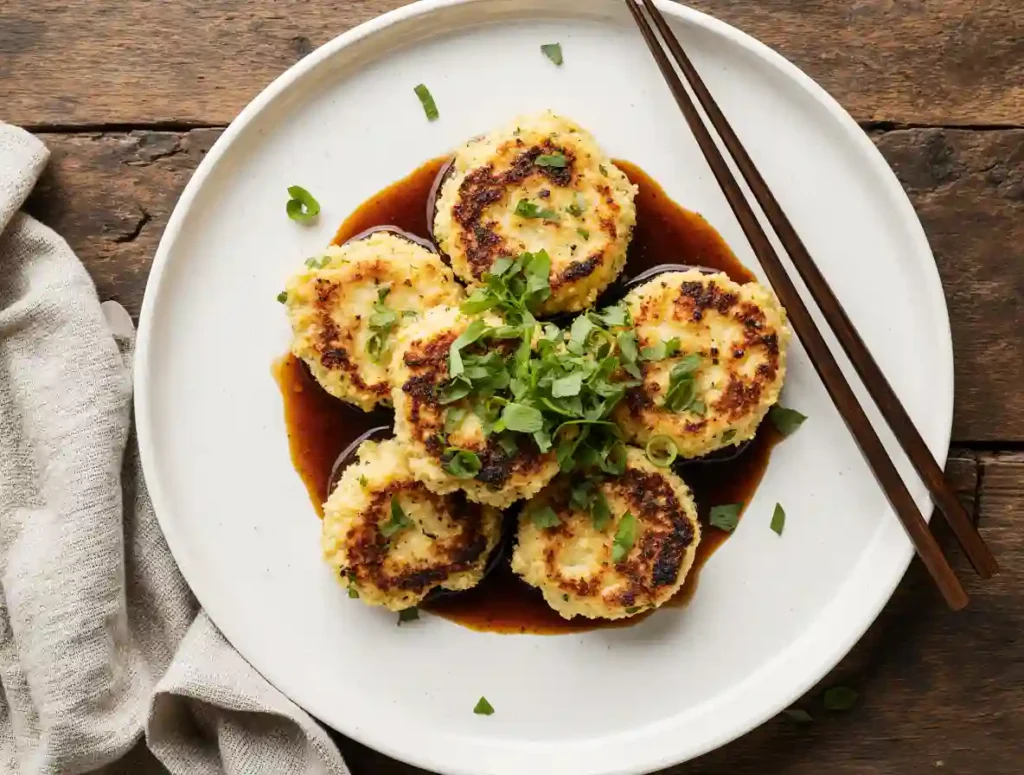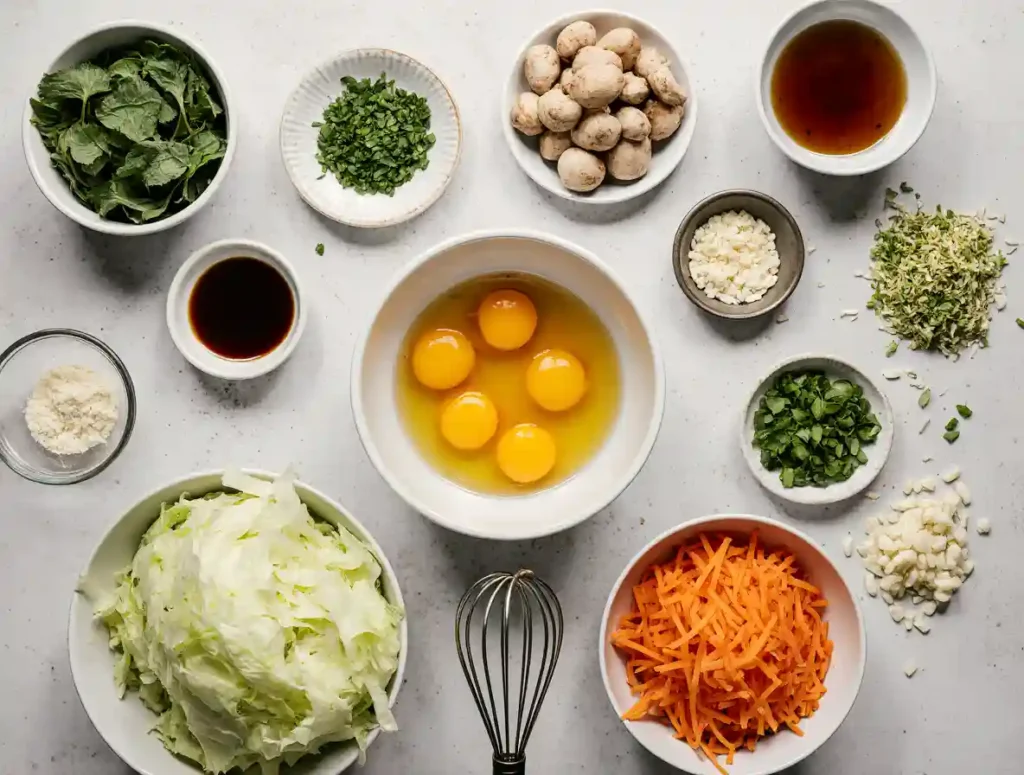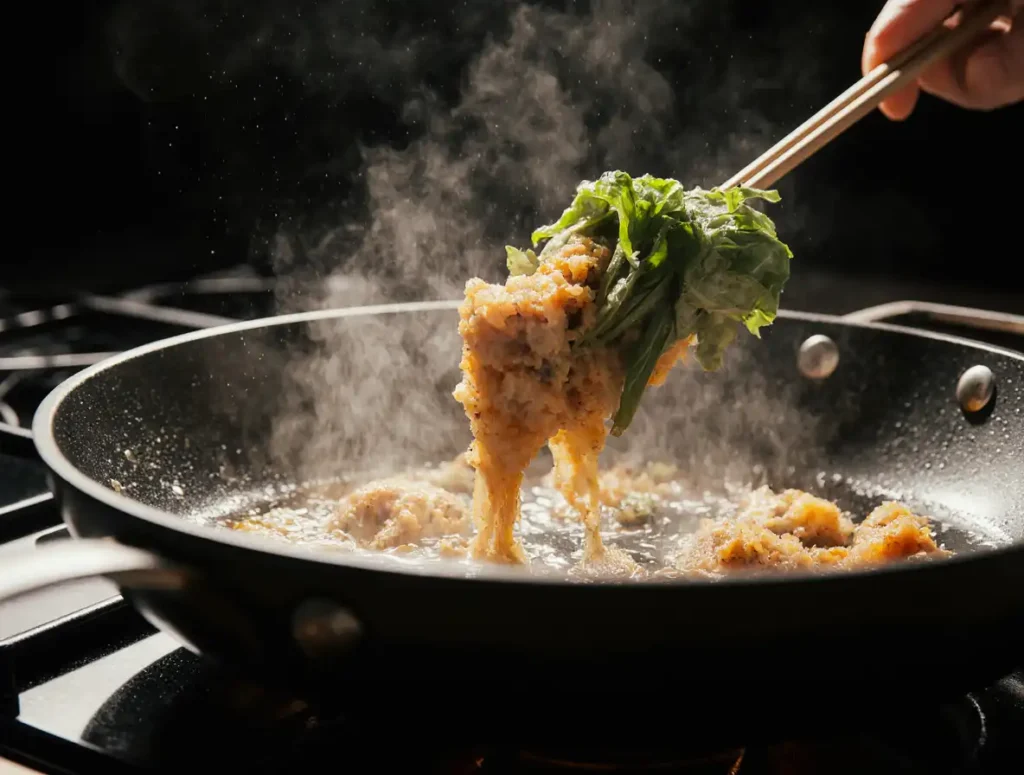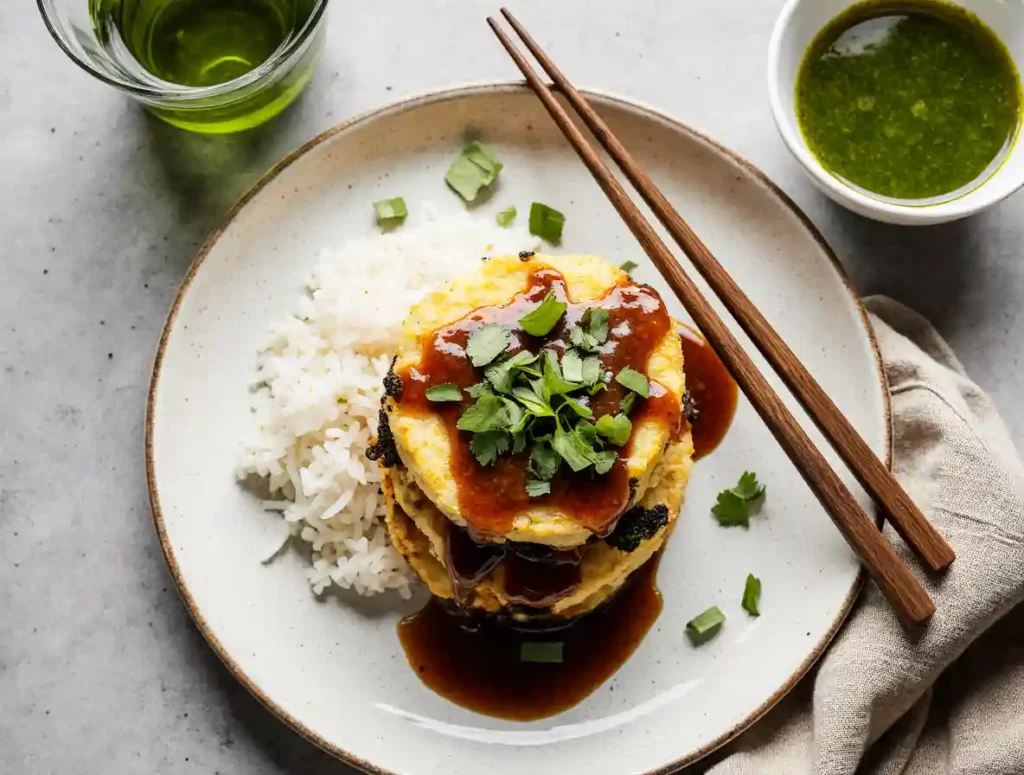
Vegetable egg foo young is one of those underrated takeout gems that surprises you with just how satisfying it is. Crispy edges, fluffy eggs, tender-crisp vegetables, and that rich brown sauce—it’s comfort food through and through. If you’ve ever wondered how to bring this dish home without losing the magic, you’re in the right place. This article breaks down everything you need to make a perfect vegetable egg foo young in your kitchen, including the best ingredients, how to make that savory sauce, and how to serve it up just like your favorite Chinese takeout spot.
Table of Contents
Table of Contents
Why Vegetable Egg Foo Young Is a Family Favorite
A Weeknight Staple Turned Comfort Favorite
Vegetable egg foo young was one of those dishes I didn’t expect to love as much as I do now. My first taste came from a cardboard takeout box late one weeknight—crispy edges, soft veggies inside, and that savory brown sauce that made everything taste like a hug. After that, it quickly became part of my regular meal rotation.
The beauty of vegetable egg foo young lies in how easy and forgiving it is. You can mix in whatever vegetables you have on hand—bean sprouts, cabbage, green onions, mushrooms. Just whisk them into eggs, ladle the mixture into a hot skillet, and you’re only minutes away from something golden and satisfying.
Nowadays, it’s my go-to when dinner needs to be quick but still feel a little special. Sometimes I’ll prep a small batch of wok stir fry frozen vegetables ahead of time just to fold into my egg mixture. It’s also one of the few meatless meals my whole family gets excited about. Paired with steamed rice or even a warm bowl of miso soup, vegetable egg foo young becomes something cozy and nourishing.
For a brunch twist, I like serving it alongside soft jammy eggs and a drizzle of chili oil. It’s not only affordable, it’s endlessly adaptable—and honestly, it tastes even better the next day.
A Brief Look at the Origins
Vegetable egg foo young is a Chinese-American classic with a backstory as comforting as its flavor. The dish was originally inspired by fu yung egg dishes from traditional Cantonese cuisine. As Chinese immigrants settled in the U.S., they created this variation using American pantry staples and local vegetables.
While many versions include meat, the vegetable egg foo young variation gained popularity for being simple, satisfying, and budget-friendly. And with the rise of home cooking, this dish has made a strong comeback—especially for those who love recreating takeout classics with healthier ingredients.
Whether you’re whipping it up on a weeknight or meal-prepping for the next day, vegetable egg foo young proves that eggs and veggies can be far more exciting than they sound.
What Goes Into Vegetable Egg Foo Young
Simple Ingredients with Big Flavor

One of the best things about vegetable egg foo young is that it doesn’t ask for anything fancy. If you’ve got eggs, a few vegetables, and basic pantry items, you’re already most of the way there.
The base starts with 4 to 6 large eggs, whisked together until smooth. This forms the structure of the dish. Then you fold in shredded cabbage, bean sprouts, scallions, mushrooms, and sometimes carrots or snow peas. These vegetables give the egg patties their texture and sweetness. You don’t need to cook them ahead—just slice thin so they cook quickly in the pan.
Garlic, soy sauce, and a pinch of white pepper add subtle depth to the mix. Some people stir in a spoonful of sesame oil or cornstarch for a little extra body, but it’s not required. What’s essential is the pan: a hot nonstick or cast iron skillet lets the mixture sizzle into crisp-edged perfection.
It’s this simplicity that reminds me of my cottage cheese pizza bowl—minimal ingredients that, together, deliver surprisingly big flavor. The key is in balancing savory, soft, and crispy textures in one satisfying bite.
The Signature Sauce Explained
Of course, no vegetable egg foo young is complete without its signature sauce. That glossy, umami-packed gravy poured over the top ties everything together. And while it may seem mysterious, it’s actually made from ingredients you likely already have.
The classic egg foo young sauce includes soy sauce, broth (chicken or veggie), oyster sauce (optional), a little cornstarch for thickening, and a dash of sugar. Some versions add a splash of rice vinegar or sesame oil for more depth. You simply whisk everything together in a saucepan and heat until thickened.
Want a bold twist? Try stirring in a teaspoon of keto Japanese BBQ sauce for smoky richness. It pairs beautifully with the tender egg and veggie base.
This sauce doesn’t just flavor the dish—it elevates it from a basic veggie omelet to a crave-worthy comfort meal. It soaks into the crevices of each golden patty and brings everything together in the most satisfying way.
Cooking Vegetable Egg Foo Young at Home
Step-by-Step Cooking Method

Making vegetable egg foo young at home is easier than it looks. The steps are quick and flexible—perfect for busy weeknights.
Start by cracking 5 or 6 large eggs into a mixing bowl. Whisk them thoroughly until the texture is uniform and fluffy. Then add about 2 cups of shredded vegetables. This could be cabbage, carrots, scallions, bean sprouts, or finely sliced mushrooms. Toss in 1 tablespoon of soy sauce, ½ teaspoon garlic powder, and a pinch of white pepper. If you like a firmer texture, you can mix in 1 teaspoon of cornstarch, but it’s totally optional.
Heat about 2 tablespoons of oil in a nonstick skillet over medium-high heat. Once hot, scoop in the mixture using a ladle, forming round patties. Cook each patty for 3 to 4 minutes per side, or until golden brown and crispy on the edges. You want the inside cooked through but still soft and moist. Transfer each patty to a paper towel-lined plate while you cook the rest.
As the patties rest, quickly stir up the sauce. Combine 1 cup of broth with 2 tablespoons of soy sauce, 1 teaspoon cornstarch, and a pinch of sugar. Heat in a small pan until thickened. Pour over the egg patties just before serving.
That’s it. You’ve made vegetable egg foo young—and once you do it once, you’ll wonder why you waited so long to try.
Serving Suggestions & Quick Pairings
Vegetable egg foo young is incredibly versatile when it comes to plating. Traditionally, it’s served over white rice with sauce poured on top, but don’t stop there. You can also pair it with noodles or even slide it into a sandwich for a fusion-style lunch.
For a protein boost, serve it next to tender air fryer chicken breast. The contrast of crispy eggs with juicy chicken makes for a hearty, balanced meal. If you’re going for a lighter pairing, try zucchini fries in the air fryer on the side. They add crunch without heaviness.
Leftovers reheat beautifully in a hot pan or even the microwave. You can chop them up and toss into a grain bowl or wrap them in a tortilla with sauce for a next-day veggie wrap.
Whether you enjoy it as breakfast-for-dinner or a healthier takeout-style lunch, vegetable egg foo young fits right into real life cooking.
FAQ
Is vegetable egg foo young healthy?
Yes, vegetable egg foo young can be a very healthy dish—especially when made at home. It’s naturally low in carbs and high in protein thanks to the eggs. The vegetables provide fiber, vitamins, and antioxidants. If you’re watching fat intake, pan-frying in a nonstick skillet with minimal oil instead of deep frying helps. You can even serve it with baked boneless chicken thighs or a side salad for a balanced plate. Just be mindful of the sauce if you’re cutting back on sodium.
What is egg foo young sauce made of?
The classic egg foo young sauce is a savory gravy made with soy sauce, broth, cornstarch, and a bit of sugar. Some versions include oyster sauce or sesame oil for added flavor. It’s thickened on the stove until glossy, then spooned generously over each patty. The sauce brings everything together and gives vegetable egg foo young its signature takeout taste.
What’s the difference between egg foo young and an omelet?
While both are egg-based, they’re quite different in style. An omelet is usually cooked quickly in a pan with minimal oil and folded over fillings like cheese or ham. Egg foo young is more like a fritter or patty—mixed with vegetables, ladled into hot oil, and cooked until the edges crisp. Plus, it’s topped with sauce, unlike the drier finish of most omelets. Think of vegetable egg foo young as a crispy, saucy, flavor-packed cousin to the traditional omelet.
What ingredients are in Foo Young?
The essential ingredients in vegetable egg foo young are eggs and finely chopped vegetables. Common veggies include cabbage, bean sprouts, scallions, carrots, and mushrooms. Seasonings like soy sauce, garlic, and white pepper bring out the flavor. Some versions include protein like shrimp, chicken, or pork, but the vegetarian version stands beautifully on its own. If you want a full meatless spread, pair it with vegan oatmeal cookies for a sweet, satisfying finish.
What ingredients are in Foo Young?
The essential ingredients in vegetable egg foo young are eggs and finely chopped vegetables. Common veggies include cabbage, bean sprouts, scallions, carrots, and mushrooms. Seasonings like soy sauce, garlic, and white pepper bring out the flavor. Some versions include protein like shrimp, chicken, or pork, but the vegetarian version stands beautifully on its own. If you want a full meatless spread, pair it with vegan oatmeal cookies for a sweet, satisfying finish.
Conclusion

Vegetable egg foo young is more than just a nostalgic takeout dish—it’s a flexible, budget-friendly meal that belongs in every home cook’s recipe box. With just a few simple ingredients, a hot skillet, and a quick sauce, you can recreate a restaurant-style classic in under 30 minutes.
Whether you’re cooking for family or just craving something cozy and savory, this dish delivers every time. And once you master the basics, you’ll find yourself returning to it again and again—changing up the veggies, trying new sauces, or even slipping leftovers into tomorrow’s lunchbox.
So next time you think of eggs for dinner, skip the basic scramble. Make vegetable egg foo young. You won’t regret it.
Print
Easy Vegetable Egg Foo Young: Crispy, Savory, and So Satisfying
- Total Time: 25 minutes
- Yield: 4 servings 1x
- Diet: Vegetarian
Description
This vegetable egg foo young is crispy, savory, and made with simple ingredients you already have at home. A takeout classic you’ll love to recreate in your kitchen.
Ingredients
5 large eggs
2 cups shredded cabbage
1/2 cup bean sprouts
1/4 cup chopped mushrooms
2 scallions, sliced
1/2 teaspoon garlic powder
1 tablespoon soy sauce
2 tablespoons oil for frying
For the sauce:
1 cup vegetable broth
2 tablespoons soy sauce
1 teaspoon cornstarch
1/2 teaspoon sugar
Instructions
1. Whisk the eggs in a mixing bowl until smooth.
2. Stir in all chopped vegetables and soy sauce.
3. Heat oil in a skillet over medium-high heat.
4. Scoop 1/3 cup of the egg mixture into the pan to form patties.
5. Cook for 3–4 minutes per side until golden and cooked through.
6. In a saucepan, combine broth, soy sauce, sugar, and cornstarch.
7. Cook the sauce over medium heat until thickened.
8. Serve the patties with warm sauce poured on top.
Notes
Use any combination of vegetables you like.
Add tofu or cooked shrimp for extra protein.
Leftovers can be stored in the fridge for up to 3 days.
- Prep Time: 10 minutes
- Cook Time: 15 minutes
- Category: Main Dish
- Method: Stovetop
- Cuisine: Chinese-American
Nutrition
- Serving Size: 2 patties
- Calories: 220
- Sugar: 2g
- Sodium: 420mg
- Fat: 15g
- Saturated Fat: 3g
- Unsaturated Fat: 10g
- Trans Fat: 0g
- Carbohydrates: 8g
- Fiber: 2g
- Protein: 10g
- Cholesterol: 190mg


